



Pretoria has this unique rhythm that feels both relaxed and alive,like a city that’s quietly confident in its own story. When you stroll through its streets,you’re greeted by the soft rustle of jacaranda trees bursting into purple blooms,their petals carpeting the sidewalks in spring. The air carries a subtle mix of fresh earth and blooming flowers,with the occasional waft of sizzling street food tempting your senses. It’s a place where history whispers from every corner,yet the vibe is refreshingly modern and welcoming. Walking around,you’ll notice the blend of grand colonial buildings standing tall alongside vibrant markets and cozy cafés where locals sip on rich South African coffee. The city hums with a gentle energy—students chatting animatedly,artists showcasing colorful crafts,and the distant sound of Afrikaans and English mingling in the breeze. There’s a warmth here,not just in the sunshine but in the smiles of people who are proud of their city’s heritage and eager to share it. What really makes Pretoria stand out is its balance between nature and culture. You can spend your morning wandering through the lush gardens of the Union Buildings,then dive into the lively atmosphere of the Church Square,where history and everyday life collide. And if you’re a foodie,don’t miss tasting local favorites like boerewors rolls or sampling fresh fruit from street vendors. Pretoria isn’t just a place to visit—it’s a place to feel,to breathe in,and to remember long after you’ve left.
The information on this page is currently being reviewed by Tripkliq and should be used as a guide only
Eng word: Hello
Eng pronunciation: Hello
Local language: Hello
Eng word: Goodbye
Eng pronunciation: Goodbye
Local language: Goodbye
Eng word: Thank you
Eng pronunciation: Thank you
Local language: Thank you
Eng word: How much
Eng pronunciation: How much
Local language: How much
Eng word: Toilet
Eng pronunciation: Toilet
Local language: Toilet
Eng word: Help me
Eng pronunciation: Help me
Local language: Help me
Eng word: Yes
Eng pronunciation: Yes
Local language: Yes
Eng word: No
Eng pronunciation: No
Local language: No
Eng word: Excuse me
Eng pronunciation: Excuse me
Local language: Excuse me
Pretoria was founded in 1855 by Marthinus Pretorius, a leader of the Voortrekkers, and named after his father, Andries Pretorius, a prominent figure in South African history.
Completed in 1913, the Union Buildings are the official seat of the South African government and house the offices of the President of South Africa. The buildings are an architectural masterpiece designed by Sir Herbert Baker.
The Voortrekker Monument, inaugurated in 1949, commemorates the Voortrekkers who left the Cape Colony between 1835 and 1854. It is a significant cultural and historical landmark in Pretoria.
Pretoria is often referred to as the 'Jacaranda City' due to the thousands of jacaranda trees that line its streets, blooming in beautiful purple flowers each spring.
Freedom Park is a heritage site and museum dedicated to the history of South Africa's liberation struggle. It offers a panoramic view of Pretoria and serves as a place of reflection and remembrance.
Church Square is the historic center of Pretoria, featuring a statue of Paul Kruger, the former President of the South African Republic. The square is surrounded by several historic buildings, including the Palace of Justice.
Melrose House is a Victorian mansion built in 1886. It played a significant role during the Second Boer War, serving as the headquarters for British forces. Today, it is a museum showcasing period furnishings and artifacts.
Established in 1946, the Pretoria National Botanical Garden is a lush,76-hectare garden that showcases South Africa's diverse flora. It is a popular spot for picnics, walks, and botanical research.
The Kruger House Museum is the former residence of Paul Kruger, President of the South African Republic. The museum offers insights into his life and the history of the late 19th century in South Africa.
In Pretoria, the most common Power Adaptor is Type C, Type D, Type M, Type N.








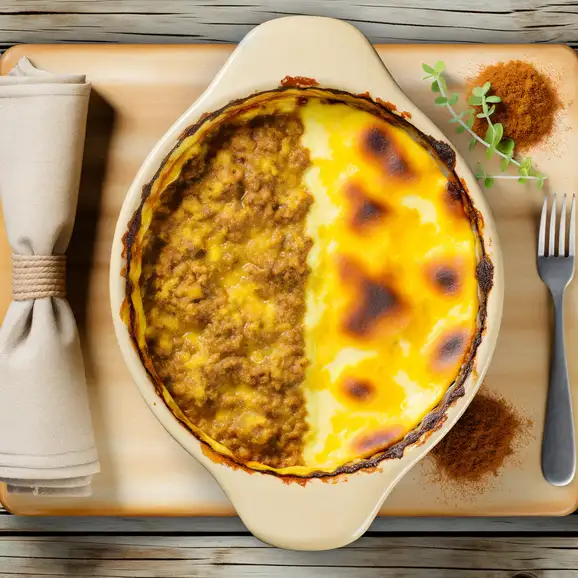
A Cape Malay dish made of spiced minced meat baked with an egg-based topping, often served with yellow rice.
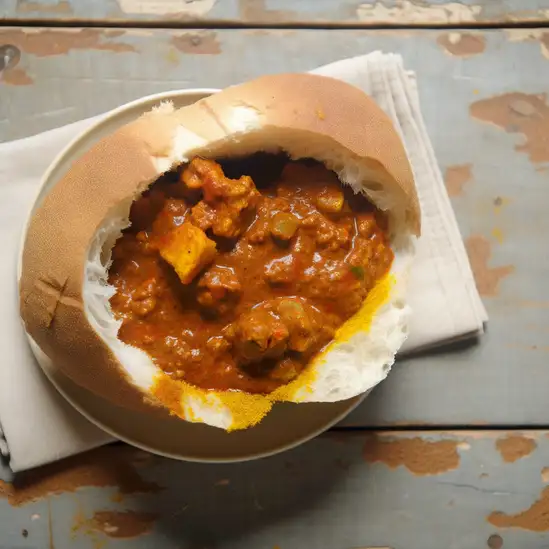
A hollowed-out loaf of bread filled with spicy curry, originally from Durban but popular in Pretoria as well.
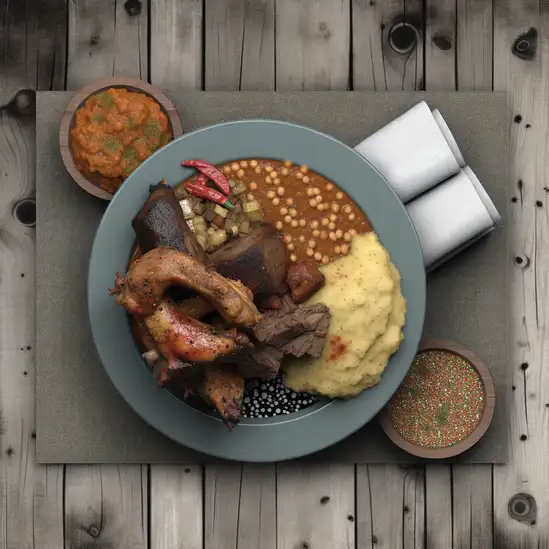
A South African barbecue featuring various meats, often served with sides like potato salad and braai bread.

A sweet, syrupy pastry twisted into a braid, deep-fried, and soaked in syrup, popular as a dessert or snack.
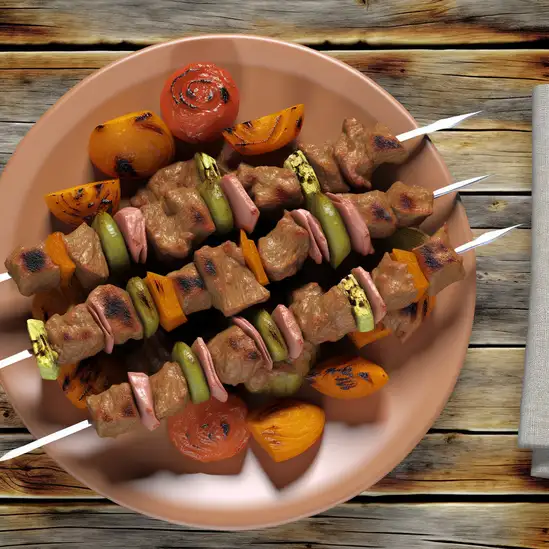
Skewered and marinated meat, often lamb or chicken, grilled or braaied, and typically served with a fruity sauce.
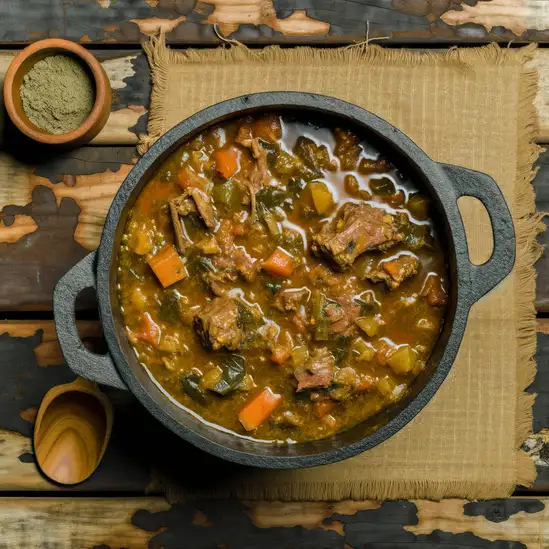
A slow-cooked stew made in a cast-iron pot, typically containing meat and vegetables, and flavored with various spices.

A traditional South African dish made of maize porridge (pap) served with a spicy vegetable relish (chakalaka).

Deep-fried bread that can be filled with savory or sweet fillings, often enjoyed as a snack or meal.
Imagine a place where the ocean’s salty breeze mingles with the scent of blooming fynbos,and every corner pulses with a vibrant mix of cultures and stories. That’s Cape Town for you—a city that feels alive in the best way. From the moment you step onto the bustling streets,you’re wrapped in a warm,welcoming energy. The iconic Table Mountain looms overhead,its flat top often dusted with clouds,inviting you to explore its trails or simply admire its majesty from a cozy café. The city hums with a rhythm that’s both laid-back and electric,where street musicians play soulful tunes and the chatter of locals spills out from colorful markets.
Walking through neighborhoods like Bo-Kaap,you’ll be greeted by a kaleidoscope of pastel houses and the irresistible aroma of spicy Cape Malay dishes wafting through the air. The flavors here are bold and comforting—think fragrant curries,fresh seafood caught just hours before,and sweet koeksisters that melt in your mouth. At the V&A Waterfront,the lively buzz of boats bobbing in the harbor mixes with the laughter of friends sharing a glass of local wine,while the distant call of seagulls reminds you of the city’s close embrace with the sea.
Cape Town’s charm lies in its contrasts:rugged landscapes meet urban sophistication,history blends with modern creativity,and every sunset paints the sky in hues you’ll want to bottle up and take home. It’s a place that invites you to slow down,breathe deeply,and soak in moments that feel both timeless and thrillingly new.
Durban feels like a warm hug from the moment you arrive—its golden beaches stretch endlessly,kissed by the Indian Ocean’s gentle waves and a breeze that carries the scent of salt and sizzling street food. Walking along the beachfront,you’ll hear the rhythmic crash of surf mingling with the lively chatter of locals and the distant beat of drums from a nearby market. The city pulses with a vibrant energy,a unique blend of Zulu heritage and Indian influences that colors everything from the spicy aromas wafting from curry stalls to the intricate beadwork in local crafts.
What really makes Durban stand out is its laid-back yet lively spirit. You can spend your mornings wandering through the bustling Victoria Street Market,where the air is thick with the fragrance of fresh spices and ripe tropical fruits,and your afternoons lounging under palm trees,watching surfers dance on the waves. The city’s warmth isn’t just in the weather—it’s in the smiles of the people,the rich storytelling in the local music,and the way every meal feels like a celebration of culture.
Durban invites you to slow down and savor life,whether that’s through a plate of bunny chow,a stroll in the lush Botanical Gardens,or a sunset cruise along the harbor. It’s a place where the ocean’s calm meets the city’s vibrant heartbeat,leaving you with a sense of belonging long after you’ve left.
If you find yourself wandering through Port Louis,you’ll immediately notice its vibrant pulse—a lively mix of old-world charm and bustling modern life that feels both warm and inviting. The city hums with energy,from the colorful stalls of the Central Market where spices,fresh tropical fruits,and fragrant street food scents mingle in the air,to the chatter of locals bargaining and sharing stories. It’s a place where the past and present dance together,with colonial architecture standing shoulder to shoulder with sleek skyscrapers.
Walking along the waterfront,the salty breeze carries the distant calls of fishermen and the gentle clinking of boats bobbing in the harbor. The streets are alive with a blend of cultures—Creole,Indian,Chinese,and French influences swirl through the food,music,and festivals. You can’t help but be drawn into the rhythm of sega music playing softly from a nearby café or the rich aroma of dholl puri being freshly made on a street corner.
Port Louis isn’t just a city; it’s a sensory experience. The vibrant colors of the market,the warmth of the people,and the tantalizing tastes of local dishes like octopus curry or gateau piment make it unforgettable. It’s a place where every corner tells a story,and every moment feels like an invitation to explore deeper. Trust me,once you’ve soaked in its unique spirit,you’ll carry a piece of Port Louis with you long after you leave.
If you ever find yourself wandering through Victoria,the capital of Seychelles,you’ll immediately notice its laid-back charm mixed with a vibrant pulse that feels both intimate and alive. It’s not a sprawling metropolis but a cozy town where the ocean breeze carries the scent of salt and tropical flowers,and the chatter of Creole,English,and French blends into a warm,welcoming hum. Walking through the colorful streets,you’ll catch glimpses of bustling markets where fresh spices,exotic fruits,and fragrant vanilla pods fill the air,inviting you to taste the island’s rich flavors.
Victoria’s character is a beautiful blend of cultures,reflected in its colonial architecture,lively street art,and the friendly smiles of locals who are always ready to share a story or recommend their favorite spot. The city feels like a crossroads of history and nature,with the iconic clock tower standing proudly as a reminder of its past,while just a short stroll away,the lush Botanical Gardens offer a peaceful escape filled with giant tortoises and vibrant tropical plants.
What really makes Victoria special is how it balances the simplicity of island life with a genuine sense of community and culture. Whether you’re sipping a freshly brewed Seychellois tea at a café,listening to the distant rhythm of sega music,or watching fishermen haul in their catch at the harbor,there’s a comforting rhythm here that invites you to slow down,breathe deeply,and soak in the moment. It’s a place that stays with you long after you leave.
Zanzibar City,particularly its historic Stone Town,is a cultural and beach destination with white sandy shores and a rich Swahili heritage.
ExploreImagine stepping into Maputo and instantly feeling the pulse of a city that’s alive with rhythm and warmth. The air carries a mix of salty ocean breeze and the rich aroma of freshly grilled seafood from street vendors,while the streets hum with the chatter of locals and the distant beat of marrabenta music. It’s a place where colonial architecture with its pastel hues stands shoulder to shoulder with vibrant markets bursting with colorful fabrics,spices,and handcrafted treasures. Walking along the waterfront,you catch glimpses of fishermen hauling in their catch,and the scent of coconut and tropical fruits mingles with the salty air.
Maputo’s charm lies in its effortless blend of cultures—Portuguese influences mingle with African traditions,creating a unique,laid-back vibe that’s both cosmopolitan and deeply rooted in local life. The city feels like a warm embrace,where people greet you with genuine smiles and invite you to share in their stories over a cup of strong coffee or a cold bottle of 2M beer. At night,the city transforms as jazz and Afrobeat spill out from cozy bars,inviting you to dance or simply soak in the lively atmosphere.
What really stays with you is the city’s spirit—resilient,creative,and welcoming. Whether you’re wandering through the bustling Mercado Central,savoring fresh prawns at a beachside shack,or watching the sunset paint the sky over the Indian Ocean,Maputo leaves you with a sense of having discovered a place that’s both vibrant and heartfelt,a city that invites you to slow down and savor every moment.
Devices are installed on ATMs to steal card information when tourists withdraw cash.
Tourists are tricked into booking non-existent or substandard accommodations through fake listings.
Car rental companies or scammers falsely claim damages to vehicles and demand excessive repair fees.
Scammers approach tourists asking for donations to fake charities or causes.
Tourists are given counterfeit currency or shortchanged during currency exchanges at unofficial locations.
Scammers impersonate police officers and demand on-the-spot fines for fabricated offenses.
Scammers pose as official tour guides and charge tourists for fake tours or provide subpar services.
Unlicensed taxi drivers or ride-hailing services overcharge tourists, especially those unfamiliar with local rates.
Thieves use distractions, such as spilling something on a tourist, to steal wallets, phones, or other valuables.
Vendors sell counterfeit or low-quality goods at inflated prices, targeting unsuspecting tourists.
The possession, use, and distribution of illegal drugs are strictly prohibited in Pretoria, as in the rest of South Africa. This includes substances such as marijuana, cocaine, heroin, and methamphetamines. South Africa has stringent drug laws, and violations can result in severe penalties, including imprisonment. Tourists should also be aware that even the possession of small amounts of illegal drugs can lead to arrest and prosecution. It is important to adhere to local laws and avoid any involvement with illegal substances.
In Pretoria, South Africa, smoking is regulated under the Tobacco Products Control Act. Smoking is prohibited in all enclosed public places, including restaurants, bars, and workplaces. Designated smoking areas may be provided, but they must be physically separated and ventilated. Smoking is also banned in certain outdoor public spaces, such as near entrances to buildings, public transport facilities, and within a certain distance of non-smoking areas. Violations can result in fines for both the smoker and the establishment owner.
Vaping in Pretoria is subject to similar regulations as smoking. The use of electronic cigarettes and other vaping devices is prohibited in enclosed public spaces and certain outdoor areas. Designated vaping areas may be available, but they must comply with the same requirements as smoking areas. It is advisable to check for specific signage and local rules regarding vaping in public places to avoid fines.
What are other people saying about Pretoria?
Recent Social posts about Pretoria
There is nothing to show you for now.